
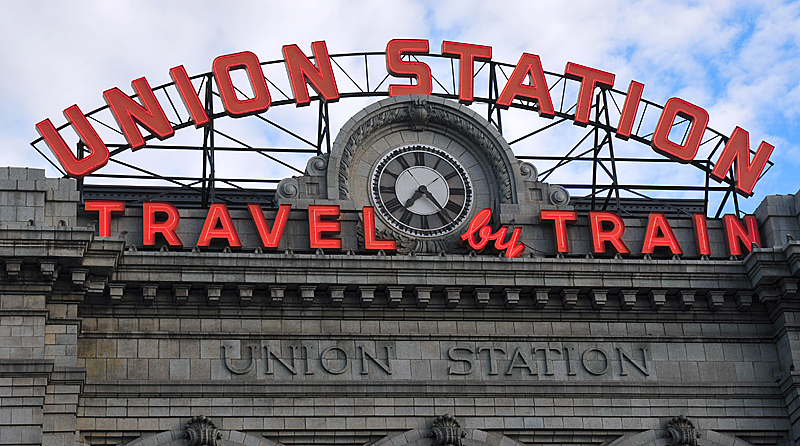





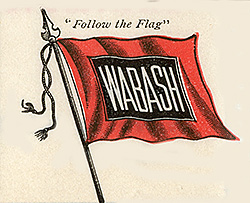
I first heard news of a big train wreck in Philo on Wednesday, October 3, 1962. Kennedy was in his second year as president; the Cuban Missile Crisis was only 15 days in the future; I was attending the University of Illinois in Champaign/Urbana. That morning my clock-radio came on at the usual hour with a local news broadcast. Through the fog of sleep it slowly registered that there had been a train wreck in Philo the previous evening. No trains were running on the busy Wabash main line. Philo is only about ten miles southeast of the University. I quickly put on a white shirt, tie, sport coat and fedora, grabbed my father's camera, which I happened to have at school, and headed out the door.
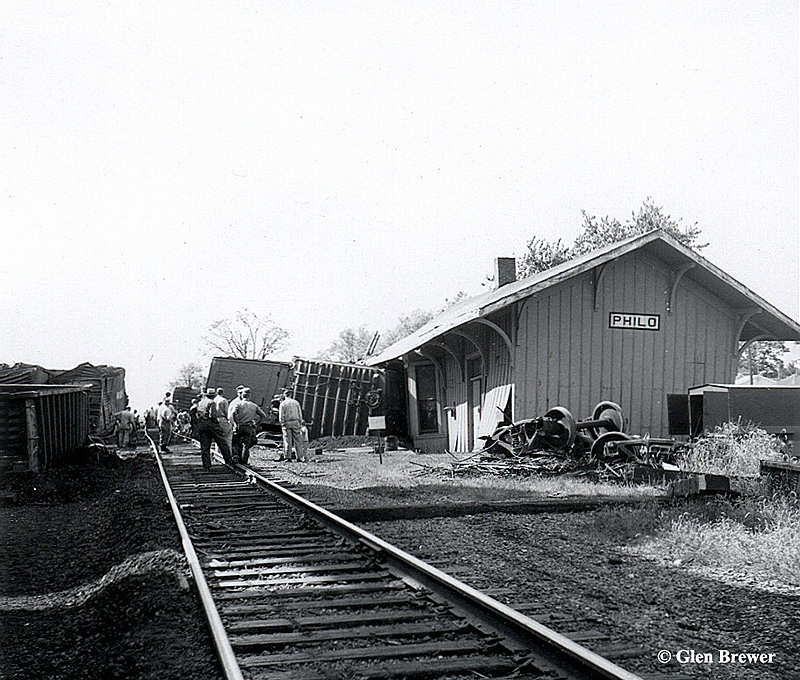
The station had a big, unwelcome visitor. This happened once before in 1935. The first time the operator had to flee from his bay window telegraph desk, but the depot was rebuilt; this time the building was unoccupied and it would not be rebuilt.
The Toledo, Wabash and Western, or perhaps it was then known as the Great Western Railroad of Illinois, came through this ridge top location in 1856. The future town site was originally known as Summit by the railroad but in 1858 local residents petitioned the railroad to rename it Philo after local pioneer Philo Hale. The second house was built by agent Wright, the first station agent for TW&W. His house was subsequently used as a depot. But it wasn't until 1864 that the town was actually platted.
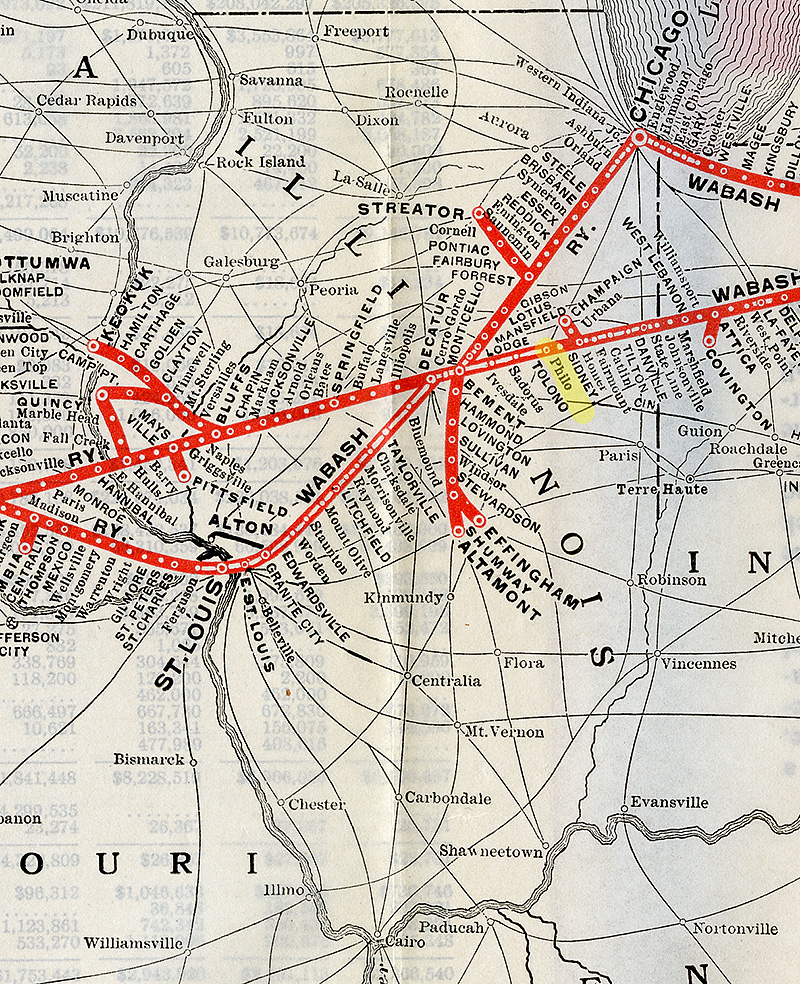
In the Philo Township elections of 1859 or 1860, it was decided to hold future township meetings in the depot of the TW&W. It is unclear if this was the former agent's house or the newer station building, but clearly Philo's station became a hub of the community not only for transportation and communications, but also for community functions. Unfortunately, it was no help one August evening in 1909 when a big fire hit downtown Philo. The new telephone exchange was among the first buildings destroyed, and since Agent Dixon was in Sidney attending a banquet, the telegraph was unavailable to call for help.
Both my parents grew up in this tiny agricultural community in east-central, Illinois, and we never failed to visit Philo at least once or twice a year during my formative years. On those family visits, I had frequently walked over to the ancient station. Unfortunately, since the trips were usually on a Sunday, the depot was normally closed when I was there. The building was a typical gray, board and batten, single story depot with a central office including a bay window for the operator, a waiting room on the west end and a freight and express room on the east. Outside, on the off track side of the station, could be found the usual "conveniences." Inside the dark, dingy waiting room was a potbelly stove for heat and a few long wooden benches.
I do not remember seeing an order board, but a photograph take before the 1935 wreck shows a Swift type (rotating) order board above the operator's bay.
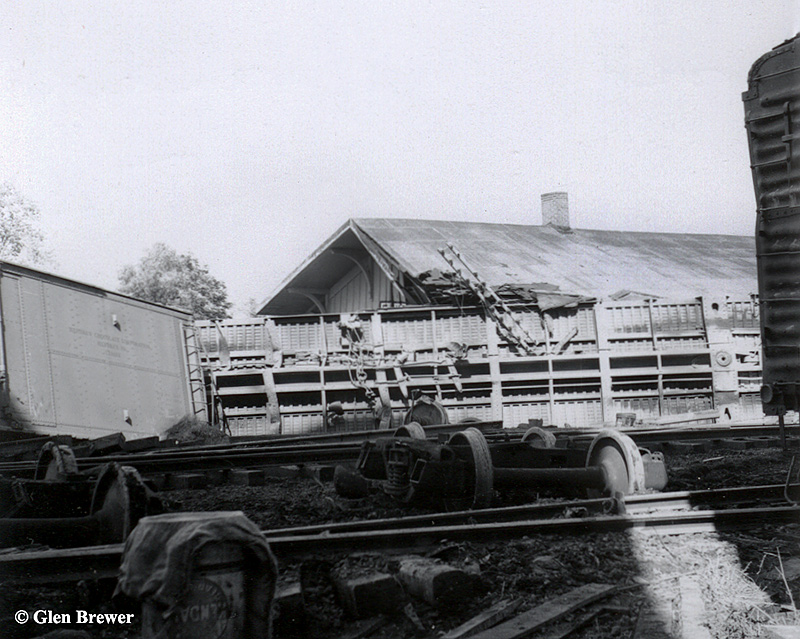
This MP boxcar hit the station waiting room and knocked the building off its foundation.
In my memory, passenger trains seldom, if ever, stopped in Philo although according to the November 1963 Official Guide, eastbound Wabash Cannonball, Train Number 4, "stops on signal to receive or discharge revenue passengers to or from scheduled stops", but of the two trains a day each way, only Number 4 would stop.
My parents remembered when the service was actually useful. Even though Champaign and Urbana were only about ten miles away, you could not go from Philo to either town on a single train. It was necessary to take the eastbound to Sidney where the Wabash had a branch line train or go west to Tolono for an Illinois Central connection to Champaign. Even with this complexity, it was still possible to travel to or from the big city three times a day each way.
In later years, it must have been a lonely assignment for the agent/operator; there were only the grain elevator and the lumber yard to keep him occupied. I believe by then agents actually served several small town stations a few hours a day.
On one visit, I was inside the waiting room listening to the operator chatting over the Morse wire. Those guys were fast: even though I had tried to learn a little Morse, the clattering of the sounder was impossible for me to decipher.
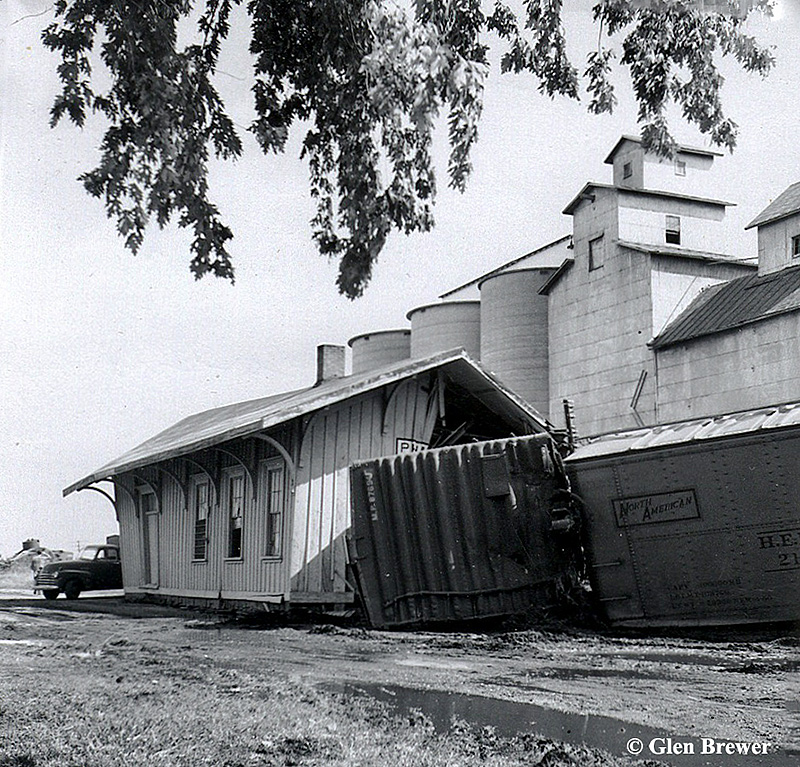
Nearing noon - the tracks are being restored.
My father was born in 1903 in a little farm house on the northeast side of town, not far from the tracks. He remembered lying in bed as a boy, listening to the little engines, sometimes double headed, trying to make it up the hill with their heavy westbound freights. It was not uncommon, he recalled, that they would stall and have to double the hill.
Mother's father lived in the house he had owned since the early 1920s when he retired from farming and became a carpenter and cabinet maker. Grandmother had died in 1935, and nothing about the house had changed since. He never had indoor plumbing or central heat. He lived only a few blocks south of the station.

Cars were shoved to the side, parts torched off to clear a train and new track was quickly put down.
The mail still arrived and departed daily by train. One Sunday we arrived in Philo and saw shredded paper littering the right-of-way from one end of town to the other. A bundle of Sunday papers was shoved off the mail car and had bounced back under the wheels. Nobody in Philo had a Sunday paper that day.
On another trip shortly after I had my driver's license, we were visiting Grandfather when I heard the westbound Cannonball coming. I raced down to the depot in the family's 1957 Chevrolet; Father's Yashica, double lens reflex camera was loaded and ready by my side. The goal was to capture the action as the mail clerk snagged the mail bag using the swiveling hook on the side of the RPO car. I soon found that I couldn't even spot the mail car while peering down into the dim ground glass of the view finder! I tried anyway, but the train was coming way too fast. I missed the action by more than three car lengths.
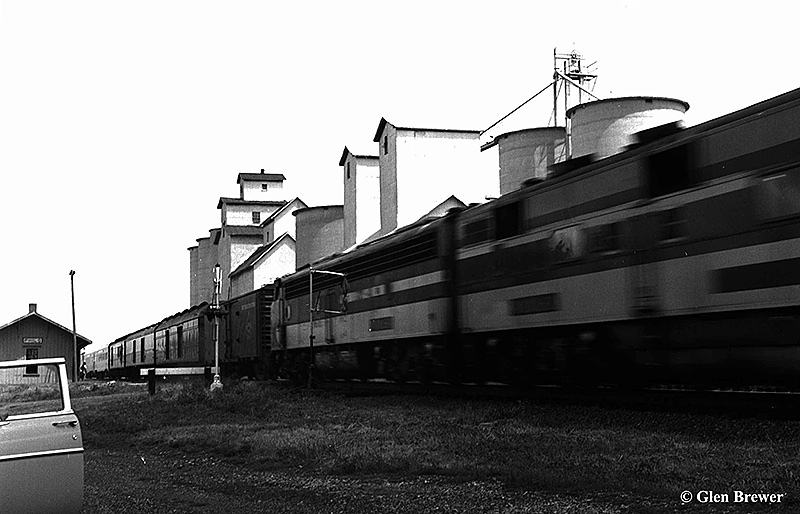
Better times at Philo station: I couldn't even spot the RPO car while attempting to photograph the taking the mail bag as the westbound Wabash Cannonball rushed by early in the afternoon of July 19, 1961.
On the day following the wreck, the scene at Philo was much worse than I had expected. Freight cars were piled up all over the center of town. A boxcar had smashed into the station waiting room, and the building was knocked off its foundation. Fortunately, nobody was inside and no one was hurt. Something very similar had happened before in 1935. That time the operator was in the bay and only barely retreated before it was too late. A tank car of gasoline had wrecked against an elevator and caught fire, but the local fire department managed to put it out. The first time the station was rebuilt; this time it would not be.
When I arrived, crews were busy pushing freight cars out of the way and torching off parts that would not clear a train on the rebuilt track. By noon, a path through the wreckage was completed and rails relayed. Westbound trains began to pass by slowly.
My little ruse with the hat and coat worked very well; no one questioned my being there, although a man I assumed to be the ICC examiner did stop me to compare notes. We observed that a car had left the rails over half a mile west, rode the ties successfully over the highway crossing, and then, when it hit the lumberyard switch, the train piled up in a heap.
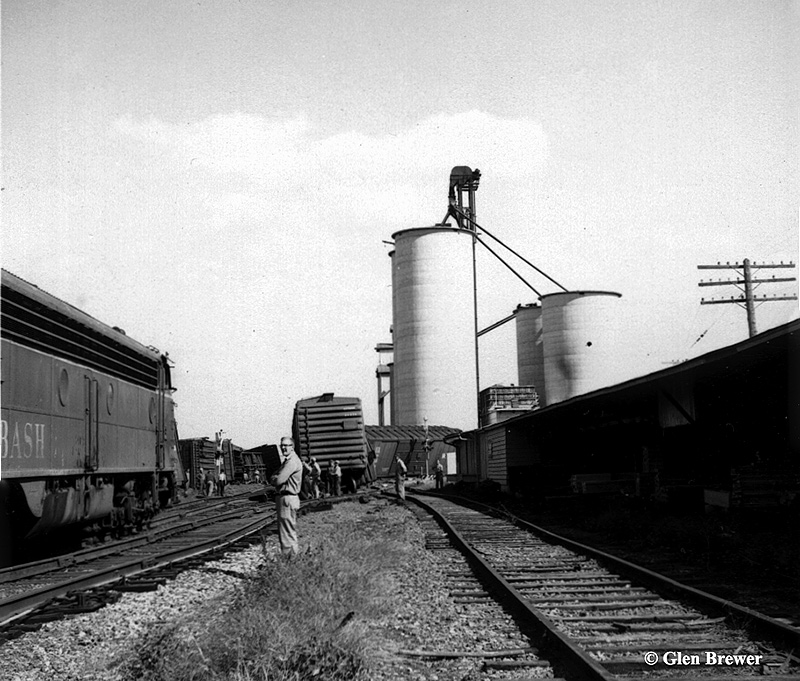
Watching the first trains creeping through.
The local newspaper, the News-Gazette, carried the story that same day. According to the article, a 112 car train was doing about 60 miles per hour at 9:10 pm, the previous evening, when a wheel broke on the 41st car. When that car hit the switch, it and 21 additional cars piled up knocking the station 18 inches off its foundation and damaging two new grain elevators and some nearby tractors.
A few weeks later, on a Sunday, I drove down to Philo to pay respects to my, by then ninety year old, grandfather. He wasn't home. With a neighbor's help, I located him across the street dressed in bib overalls as usual and with his Burlington railroad watch tucked into the bib pocket and secured with a braded leather strap. Grandfather was sawing a well seasoned, oversize board with a cross cut hand saw when I found him. He was helping his neighbor build a garage using well seasoned lumber recovered from the Wabash depot.

